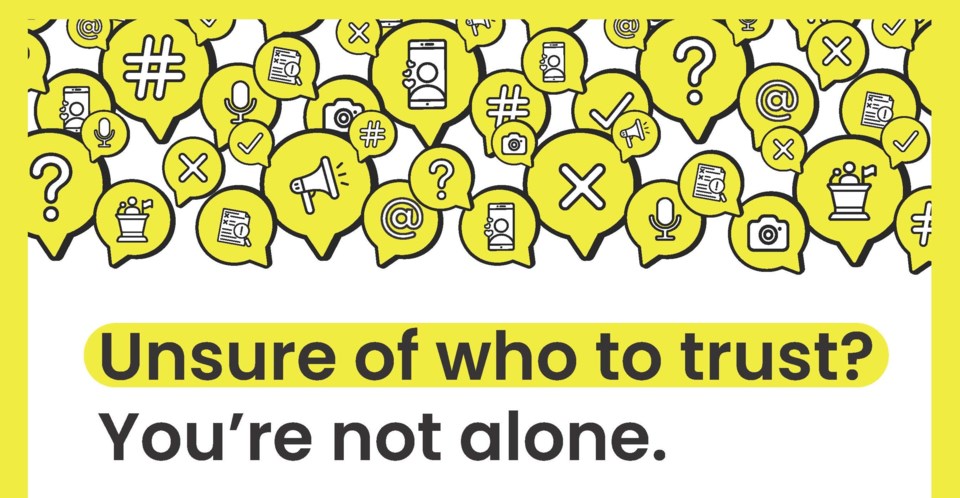There’s a Latin phrase you may have heard of: caveat emptor – meaning literally, “let the buyer beware.” It’s a staple of contract law; in short, it means that someone buying something needs to learn about the nature of what they’re buying – that it does what it should and that the seller is actually allowed to sell it.
Yes, there are laws to protect consumers from unscrupulous sellers outright lying about their products or services, but they’re not foolproof – the buyer has some responsibility to think for themselves.
With that in mind, I think during Media Literacy Week, we should consider caveat lector – let the reader beware.
That’s because the digital and social media revolutions make it more possible than ever for us as readers to be misinformed.
Until the last 20 years, reaching a mass audience was a very expensive proposition. It took a huge investment in capital and staff to buy presses, or radio stations, or TV licences, report the news and distribute it to the public.
As a result, the craft of journalism – which began with pamphleteers and partisans spreading “news” that served their interests – had to become more neutral and more objective in order to gain as large an audience as possible.
But now, every person with a smartphone can send words, pictures and video to a global audience instantly. That means there’s no cost – and little consequence – to publishing whatever someone wishes, and it’s easier than ever to make anything look like an official news source, especially in the small confines of a phone screen. And there are plenty of people willing to bend the truth or even lie to convince people of their point of view.
That means you, the reader, can’t take what you read online for granted. There’s no government agency or consumer protection branch saving you from misinformation online. In other words, caveat lector.
Thankfully, there are some resources you can use to help navigate this scary new world. News Media Canada, for instance, has a great website, SPOTfakenews.ca, which provides four handy questions you can use when looking at news online:
S: Is it a credible SOURCE?
P: Is the PERSPECTIVE biased?
O: Are OTHER sources reporting the same story?
T: Is the story TIMELY?
Of those, I think the first is the most important: know your sources of information, especially on social media. Look for the name of the outlet above the headline in your feed. Do you recognize it? If you don’t, proceed with caution, and look for news sources you trust to corroborate what you’ve read.
How do you find trusted news sources? Tricky, but there are clues. Look for news sources with local reporters, with email addresses they can be contacted at. Look for the ways they hold themselves accountable for their work, like membership in an association like News Media Canada or complaints body like the National NewsMedia Council.
Does this sound like a lot of work when you’re just trying to read an article your Aunt Sally sent you? Damn right it is.
But the cost of misinformation is high. It can result in everything from bad decisions being made at your local town hall to people dying from preventable diseases to dictators being elected to power.
It’s worth the work to become just a little more media literate. Trust me. Actually, don’t – check it out yourself.



